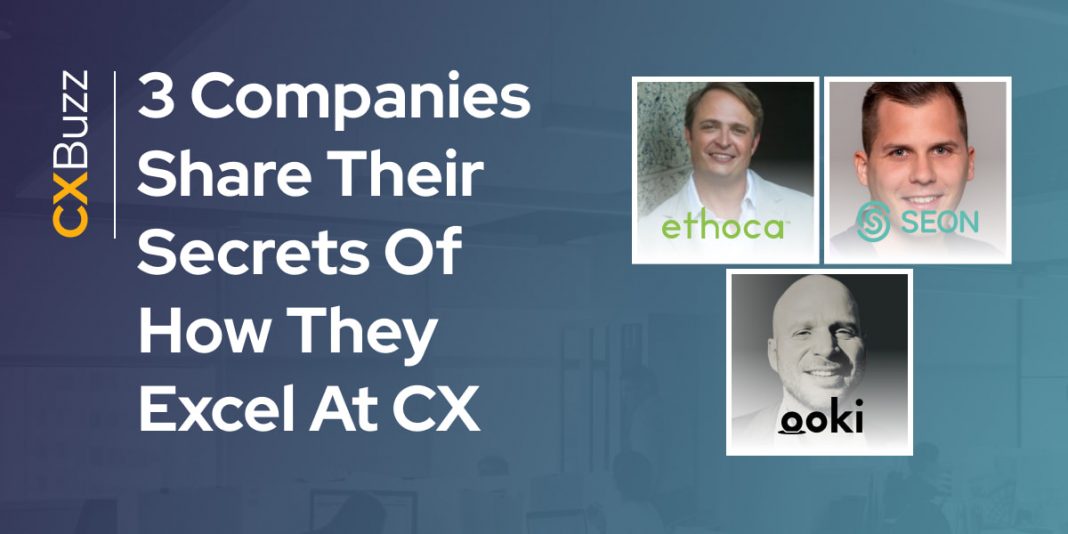Providing a stand-out customer experience now plays a significant, if not crucial, part in a company’s success. The ones who stand out make it look easy. But of course, it is not. I set out to ask three such companies how they approached and achieved outstanding CX.
My first stop was to ask Jason Howard, Executive Vice President of Ethoca, the award-winning provider of collaboration-based intelligence and technology solutions, to fight fraud, prevent disputes, and improve customer experience. Mastercard acquired Ethoca in 2019. Jason says that they have two goals; one is preventing fraud, and the other is CX. Both are enabled by collaboration. One example was the lack of straightforward or efficient ways for customers to verify purchases on digital statements. So, they introduced Consumer Clarity which benefits everyone, giving consumers greater transparency on purchases and helping businesses connect with customers better through their trusted digital banking channels.
Consumer Clarity meant them reinventing the way merchants, consumers and banks interact online, massively impacting shoppers’ confidence. It also means less confusion, fewer disputes, lower fraud, and a much-improved customer experience. They work with leading merchants and card issuers across the globe, and it is that collaboration that helps them stop high volumes of fraud. “Our focus on customer experience builds on that collaboration mindset,” says Jason. “Not only does it provide better digital engagement for issuers, but it also gives merchants more opportunity to connect to their customers in new ways”.
Tamas Kadar is co-founder and CEO of SEON, a company that tackles fraud with the supply of easy-to-use tech for merchants to integrate into their system. It weeds out fake accounts and prevents fraudulent transactions. SEON is rapidly expanding globally, and Tamas was included in Forbes’ “Hottest Young Startups in Europe.” Tamas explains that SEON’s approach is product-led. Traditional risk companies bind their clients into long-term contracts and develop technology that is hard to integrate into eCommerce platforms with outdated analysis tools. They wanted to re-build what a risk tool could be from the ground up, modernizing everything about it, from how it works to how it is sold. They wanted it to be as easy to subscribe as signing up to Netflix or Spotify and offer a free trial to customers in the same way.
Rigid contracts, high costs often put off small businesses. SEON makes everything transparent. Their use of AI and ML is critical. Online fraud is moving so fast that AI is the only thing that can keep up. Their guided ML systems can recognize the signatures of fraudulent activity far quicker than manual reviews can and assign predictive risk scores to new clients accordingly. Tamas says that they are “constantly improving and so fast, that by the time you have finished reading this, they will be better than when you started.” They like to grow alongside their customers. If the customers have problems, they provide solutions and, once built, those solutions, roll them out to their whole customer base. Fraud never stops, nor do they; their continual aim is to deliver the best possible customer experience.
Ooki is an app that helps you understand your credit score and improve it and provides help with fraud at the consumer end, sending alerts to your credit profile to help you quickly take action. Along with managing all your accounts, you also get personalized credit offers and deals.
Damon Hirschl of Ooki says they have completed several major integrations with FinTech providers to fix poor CX in financial services and product purchases. If a consumer applies for a credit purchase through Ooki, they first order eligibility, then by guaranteed rates, then by lowest APR, and then tell the user how long it will take, depending on the partners’ technology.
Consumers want convenience, and so if there’s an option to complete the application in under a minute, which through Ooki and some newer FinTech lenders is possible, then that is what they are likely to take.
Damon says that “building a good CX requires that there be a real problem to be solved, alongside a great product and technology team to execute the outputs. In all circumstances, it is an iterative, evolutional process that, if well thought out and regularly brainstormed, should lead to a great consumer experience in the end.” Ooki’s entire focus is around what is of use to the consumer, and then we work back from there. Damon believes that doing it this way will ensure no misalignment between the companies’ vision and the consumers’ expectations. He says that problems are inevitable during the build phase of these products, but the key is learning how to navigate those problems and remain positive on outlook.
I had deliberately chosen financial services, a sector that used not to be known for progressive thinking or putting the customer first. Yet the common theme now with these successful companies is that great CX is all about having your finger on the pulse of what customers want and using the best tech skills at your disposal to provide it.
About the author:
Jan Cavelle has several decades of founding micro and SME’s behind her and is now a freelance writer and author. Throughout her career, she has worked on various campaigns to support and encourage other entrepreneurs. Her first book is Scale for Success, published by Bloomsbury.






